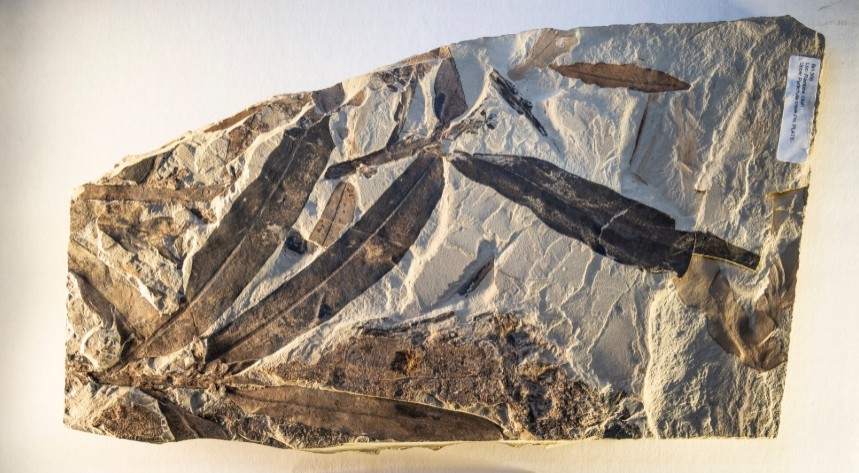
Scientists have uncovered a fossilized plant species, nicknamed the "alien plant," near an old Utah ghost town. Found in the Green River Formation, the species, Othniophyton elongatum, was first discovered in 1969.
Originally thought to be related to ginseng, recent research reveals that this plant is much stranger and unrelated to any living plant family or genus.
47-Million-Year-Old Fossil in Utah Reveals Unmatched Traits in Plant History
The Green River Formation, a 47-million-year-old site in eastern Utah, is a treasure trove of ancient life, including fish, birds, and plants.
The fossilized remains of the alien plant were preserved in lake sediments and volcanic ash, providing a rare glimpse into Earth's prehistoric ecosystems.
Initially, scientists only had fossilized leaves to study, leading them to believe the plant might belong to the ginseng family due to the veins' pattern.
However, a recent discovery by Steven Manchester, a paleobotanist from the Florida Museum of Natural History, has challenged this idea.
Manchester stumbled upon a fossil at the University of California, Berkeley, that included leaves, fruits, and flowers, offering a much more complete picture of the plant's anatomy.
According to LiveScience, this newer fossil revealed surprising features, including tiny seeds and stamens (male flower parts) attached to the plant's fruits. Unlike modern plants, where stamens usually fall off after fertilization, Othniophyton elongatum retains them, a trait unseen in any living species.
Using advanced microscopy and artificial intelligence tools, researchers examined these details, but they could not link the plant to any known plant family, living or extinct.
Read more: Antarctica's Deception Island: A Volcano-Formed Sanctuary in the Heart of the Southern Ocean
Extinct 'Alien Plant' Reveals Green River Formation's Ancient Mysteries
The "alien plant" likely belonged to a completely extinct lineage, making it a unique find in the world of paleobotany.
Other fossils from the Green River Formation, such as mysterious fruits and leaves from unrelated species, have similarly stumped scientists, further emphasizing the region's rich but puzzling biodiversity, IFL Science reported.
Manchester and his team believe that the plant's unusual traits, combined with its inability to fit into existing classifications, highlight the challenges of studying ancient species.
These discoveries not only add to our understanding of prehistoric life but also demonstrate how modern technology can uncover details that were once overlooked.
The findings, published in the journal Annals of Botany, remind us of the vast and largely unexplored history of plant evolution.
As researchers continue to investigate the Green River Formation, they hope to uncover more answers — or perhaps even more questions — about Earth's ancient past.
© 2025 NatureWorldNews.com All rights reserved. Do not reproduce without permission.





